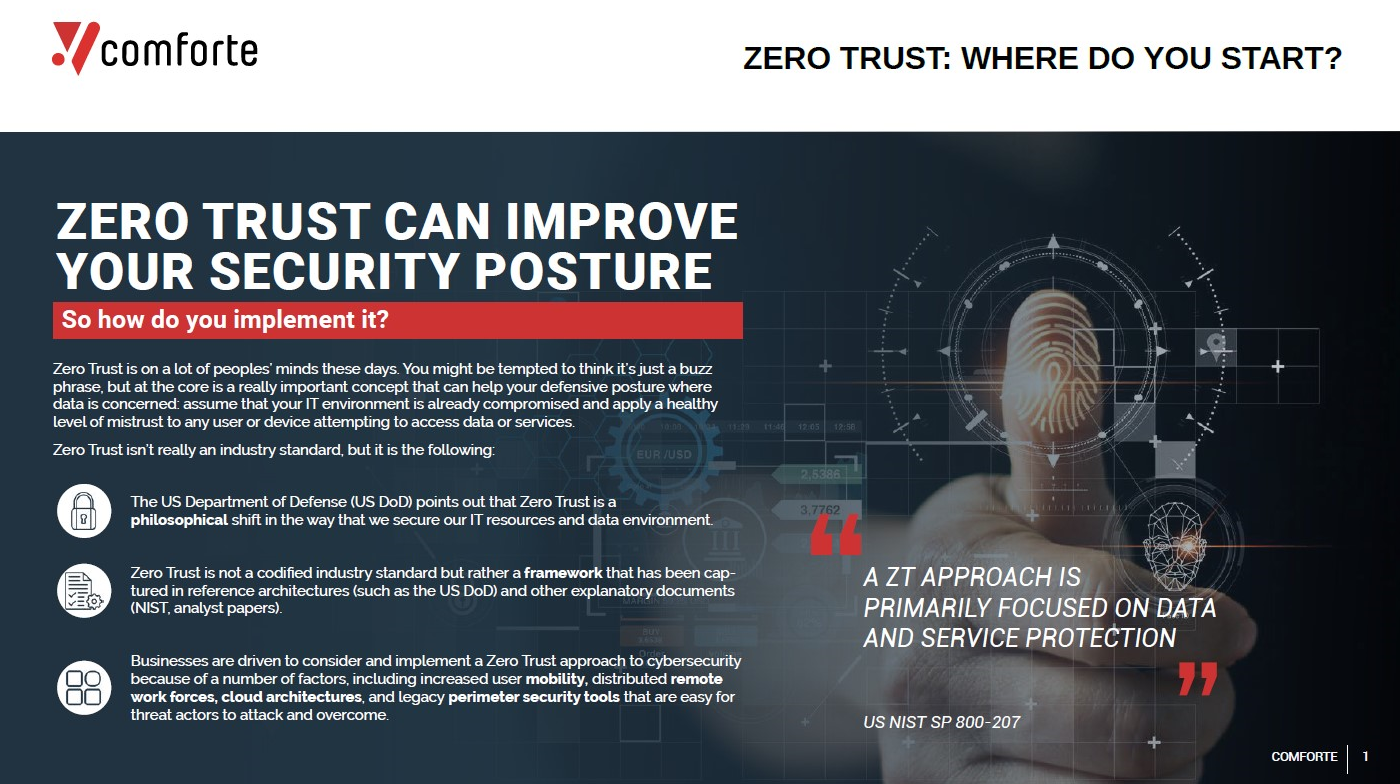ZERO TRUST CAN REALLY PAY OFF
But the right starting point is critical
Zero Trust isn't a technical standard
It's a set of best practices and guardrails
Sure, implementing Zero Trust across your IT infrastructure might be easier if a definitive standard specified the exact approach to take.
Yet Zero Trust is really a collection of principles and best practices, guided by a fresh way of looking at security. The US Department of Defense even states in their reference architecture that Zero Trust is a philosophical outlook requiring a change in organizational mindset.
So how do you implement a new mindset and know that it's working? It starts with knowing what the most valuable assets are that you're trying to protect with a Zero Trust posture.

Zero Trust is a simple concept
Its power lies in the fundamental assumptions
At the core of Zero Trust is the assumption that your IT environment has already been breached. Zero Trust recommends moving beyond traditional perimeter security because perimeters will always be breached.
The only way to deal with an intruder (either an outside hacker or insider threat actor) is to deny anyone and anything implicit trust. Requests for access to your data or IT resources must be validated and authenticated. Not just once. Every time.
Zero Trust is the defensive posture of continually monitoring and controlling activity and access, challenging requests at every turn, and providing the bare minimum privileges to meet a validated data or resource request.

Threat actors are after very specific targets
Your IT assets aren't the primary goal, just stepping stones to it
Cybersecurity experts have testified before the US Congress about what threat actors are after when they carry out cyber-attacks. Of course, each incident and breach is unique, but they all share on thing in common:
Threat actors want your data.
An enterprise's most valuable asset is its sensitive information, such as customer data, intellectual property, and other trade secrets underlying the corporate strategy. The IT assets housing and supporting all this data are important to threat actors only as a means to get to that data.

Protect your data first, because your data is the target - data is the logical starting point for implementing Zero Trust
The role of data is paramount in Zero Trust
Data is the most important part of your IT infrastructure, because sensitive data is the target for every threat actor trying to breach your environment.
Your IT infrastructure supports access to and the usage of enterprise data. Treat your data as the crowning part of organization.
Check out this video for a more detailed explanation about data within the Zero Trust paradigm.

Data-centric security is an important part of your Zero Trust initiative
It protects what threat actors are after, and it provides a high level of control and granularity over your data
Discover where valuable and sensitive personal data is so that your Zero Trust posture can apply to it
Protect your data to the point that you don't have to de-protect it within your business workflows
If nobody can actually see sensitive information if they're not entitled to, then you've implemented the best Zero Trust practice possible

Learn more with a fact sheet
Zero Trust is a methodology, a set of design principles, and a change in defensive mindset. Your first decision is deciding where to start your Zero Trust implementation.
Read this fact sheet to learn more about Zero Trust and data-centric security.
